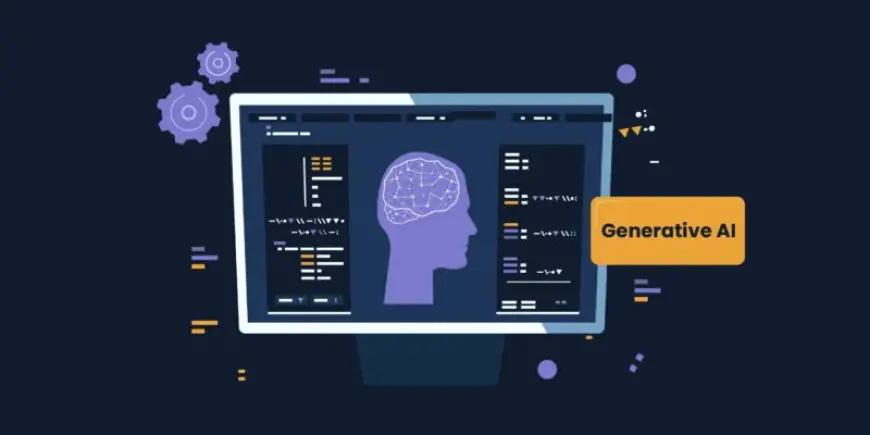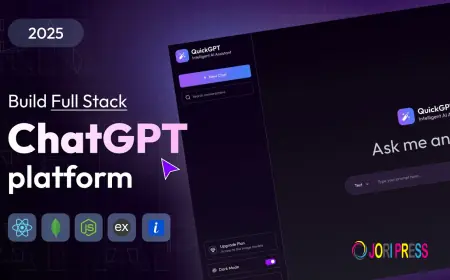10 Real-World Use Cases of AI Code Generation Software Development in Enterprise Environments
Discover how leading enterprises are leveraging AI code generation software development to streamline operations, accelerate product delivery, and enhance developer efficiency.

In the ever-evolving digital landscape, enterprises are under constant pressure to innovate, deliver faster, and reduce costs. One of the most promising solutions empowering software teams today is AI code generation software development. It’s not just a buzzword—AI-driven tools are fundamentally changing how code is written, tested, and deployed across industries.
From automating repetitive tasks to accelerating backend development, AI code generation is enabling enterprises to achieve new levels of productivity, scalability, and consistency. In this blog, we’ll explore 10 impactful, real-world use cases of AI code generation software in enterprise environments and highlight how businesses are transforming their development workflows.
1. Automated Backend Development for Microservices
Industry Example: Fintech
Modern enterprise applications rely on microservices for scalability and modularity. AI code generation tools can rapidly scaffold microservices, including database models, controllers, and RESTful APIs based on business logic defined in plain English.
How it works:
-
Developers input specifications or user stories.
-
AI generates the required code modules.
-
The code integrates seamlessly into existing microservice architecture.
Enterprise benefit: Reduces backend development time by up to 70%, enabling faster product iteration and easier maintenance.
2. Rapid Prototyping for MVPs and Internal Tools
Industry Example: Healthcare Tech
Enterprises often need internal dashboards, data visualization tools, or MVPs for testing new features. AI accelerates the prototyping phase by generating functional front-end and back-end code in hours instead of weeks.
How it works:
-
Teams describe functionality via prompts or sketches.
-
AI produces responsive UI code and connects it to dummy or live data sources.
-
Prototypes are tested and iterated on instantly.
Enterprise benefit: Enhances agility and fosters a culture of innovation with faster validation cycles.
3. Automated Code Documentation and Comments
Industry Example: Enterprise SaaS
Maintaining well-documented code is crucial in large enterprise teams but is often neglected. AI tools can auto-generate docstrings, in-line comments, and architectural overviews by analyzing the code structure and intent.
How it works:
-
AI scans code and adds semantic comments.
-
Documentation is updated automatically as code changes.
Enterprise benefit: Increases code readability, speeds up onboarding, and improves collaboration among distributed teams.
4. Legacy Code Modernization and Refactoring
Industry Example: Banking and Insurance
Many legacy systems are written in outdated languages or architectures. AI can assist in translating COBOL or Java monoliths into modern frameworks like Node.js or Python-based microservices.
How it works:
-
AI parses legacy code.
-
Suggests equivalent logic in the new language.
-
Refactors bulky functions into modular, reusable code.
Enterprise benefit: Saves millions in reengineering costs and accelerates digital transformation initiatives.
5. Intelligent Bug Detection and Auto-Fixing
Industry Example: E-commerce Platforms
Enterprises deploy frequently, increasing the risk of bugs. AI tools can detect logical errors, missing conditions, or potential breakpoints—and even offer fixes before they reach production.
How it works:
-
Integrated into the IDE or CI/CD pipeline.
-
AI flags vulnerabilities in real-time.
-
Suggests or auto-applies best-practice solutions.
Enterprise benefit: Reduces downtime, increases reliability, and enhances user experience.
6. Code Generation for Custom APIs and SDKs
Industry Example: Cloud Services Providers
Enterprises that offer APIs or SDKs for clients often need to generate multiple versions across different languages. AI tools automate the creation of SDKs in Python, JavaScript, Java, etc., from a single OpenAPI schema or prompt.
How it works:
-
API definitions are fed into the AI engine.
-
SDK code for multiple platforms is generated.
-
Code includes auth handlers, data models, and sample calls.
Enterprise benefit: Delivers high-quality SDKs faster, improving developer adoption and integration rates.
7. Infrastructure-as-Code (IaC) Generation
Industry Example: DevOps and Cloud Infrastructure Teams
AI code generation isn’t limited to app development. It also powers the creation of Terraform, AWS CloudFormation, or Azure Resource Manager templates, allowing infrastructure teams to define cloud resources using AI assistance.
How it works:
-
Teams define desired infrastructure in natural language.
-
AI generates the corresponding YAML/JSON/Terraform script.
-
Scripts are validated and deployed automatically.
Enterprise benefit: Enhances cloud deployment consistency, reduces misconfigurations, and improves DevSecOps workflows.
8. Automated Unit and Integration Test Generation
Industry Example: EdTech Platforms
Testing is a bottleneck in enterprise CI/CD pipelines. AI tools now generate unit tests, integration tests, and mocks based on the existing codebase and business requirements.
How it works:
-
AI scans the code and detects testable logic.
-
Suggests test cases with edge conditions and assertions.
-
Integrates with testing frameworks like JUnit, Mocha, or PyTest.
Enterprise benefit: Improves test coverage, accelerates QA cycles, and boosts release confidence.
9. Cross-Platform Code Translation and Optimization
Industry Example: IoT and Embedded Systems
For applications running across platforms (mobile, web, embedded), AI helps translate business logic across Swift, Kotlin, JavaScript, and C++ without compromising performance.
How it works:
-
Shared logic is written in one language.
-
AI translates and optimizes for other platforms.
-
Redundant functions are eliminated, and performance is tuned.
Enterprise benefit: Reduces duplicate work, ensures consistency, and accelerates time-to-market for multi-platform products.
10. Empowering Citizen Developers with Low-Code/No-Code AI
Industry Example: Telecom and Retail
With the rise of low-code platforms, AI code generation now supports business analysts and non-engineers in building internal tools or automation workflows with minimal coding knowledge.
How it works:
-
Users type prompts or select app templates.
-
AI generates working apps or integrations using visual builders.
-
Developers review and deploy the code securely.
Enterprise benefit: Democratizes software development, reduces IT backlog, and empowers cross-functional teams to innovate independently.
How Enterprises Are Implementing AI Code Generation
Successful enterprise implementation of AI code generation involves:
-
Choosing the Right Tools: GitHub Copilot, Amazon CodeWhisperer, Replit Ghostwriter, Tabnine, etc.
-
Training Development Teams: Helping developers write better prompts and use AI suggestions responsibly.
-
Ensuring Governance and Security: Reviewing AI-generated code for compliance, licensing, and vulnerabilities.
-
Integrating with CI/CD Pipelines: Seamlessly incorporating AI into the software delivery lifecycle.
-
Measuring Impact: Tracking productivity, code quality, and bug reduction metrics post-adoption.
The Business Value of AI Code Generation in Enterprises
| Metric | With AI Code Generation |
|---|---|
| Development Time | Reduced by 30–70% |
| Code Quality | Improved with fewer logic and syntax errors |
| Onboarding Time | Faster due to better documentation and code readability |
| Deployment Frequency | Increased due to faster prototyping and testing |
| Total Cost of Ownership | Lowered with reduced maintenance and legacy refactoring costs |
These numbers aren’t just hypothetical. Leading enterprises have already reported measurable gains across key performance indicators after adopting AI code generation tools.
Final Thoughts
AI code generation software development is no longer experimental—it’s an essential productivity lever in modern enterprise environments. From backend automation and cloud provisioning to rapid prototyping and intelligent testing, these real-world use cases showcase just how far AI can take enterprise development teams.
As we move deeper into the age of intelligent software development, organizations that embrace AI-driven workflows will not only ship faster but build smarter, scalable, and more resilient systems.
What's Your Reaction?
 Like
0
Like
0
 Dislike
0
Dislike
0
 Love
0
Love
0
 Funny
0
Funny
0
 Angry
0
Angry
0
 Sad
0
Sad
0
 Wow
0
Wow
0




















































